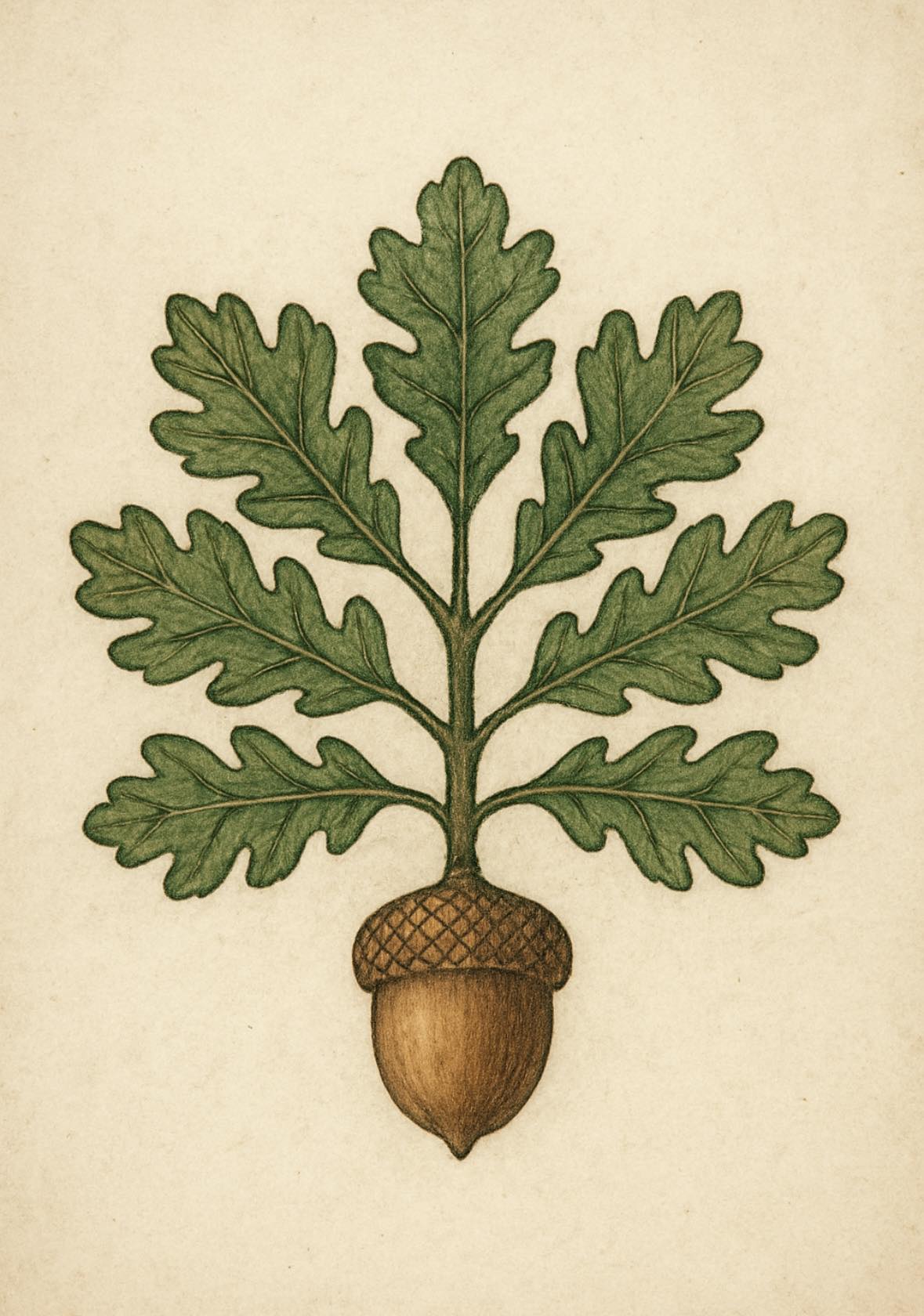Sevenoaks Early Medieval Company
850–950 AD –
Image of seven Oak Leaves taken from the Lutrell Psalter, Courtesy British Library, Add. 42130, f.207.
About Sevenoaks Early Medieval Company
Sevenoaks Early Medieval Company is a group dedicated to exploring and re-enacting the vibrant history of Europe between 850 and 950 AD, focusing on strong cultural mix of the period. Our name reflects both the seven cultures represented in our group and the oak as a symbol of strength, morale, resistance, and knowledge.
- Anglo-Saxon
- Danish
- Irish/Celtic
- Norwegian
- Rus-Viking
- Byzantine
- Gotland
We celebrate the diversity and interaction of these cultures in early medieval Northumbria, bringing their stories to life through research, craft, and living history.

The Oak: a symbol of strength, morale, resistance, and knowledge
What We Do
- Historical re-enactment of early medieval life
- Demonstrations of period crafts and skills
- Participation in medieval markets and events
- Educational displays and workshops
Join Our Group
Whether you're interested in combat, crafts, or historical research, we welcome new members who share our passion for the early medieval period. No experience is necessary - we provide training and guidance for all aspects of medieval re-enactment.
Sevenoaks Photo Gallery
Timeline of Significant Events (800-1100)
800
Coronation of Charlemagne as Holy Roman Emperor, marking the beginning of the Carolingian Renaissance.
850
Development of the tunic as the primary garment for both men and women, with variations in length and decoration indicating social status.
871
Accession of Alfred the Great as King of Wessex, beginning his campaign against the Vikings.
900
Introduction of the mantle as a formal outer garment, often decorated with embroidery and fur trim.
927
Unification of England under Æthelstan, the first King of all England.
950
Development of the brocade technique, leading to more elaborate textile patterns and designs.
1016
Accession of Cnut the Great, establishing a North Sea Empire.
1020
Introduction of the bliaut, a fitted garment with long, flowing sleeves that becomes popular among the nobility.
1066
The Norman Conquest of England, led by William the Conqueror.
1070
Development of the circlet as a formal headpiece for nobility, often decorated with precious stones.
1086
Completion of the Domesday Book, a comprehensive survey of England's land and resources.
1090
Introduction of the chaperon, a hooded garment that becomes a practical and fashionable accessory.
1095
Pope Urban II calls for the First Crusade at the Council of Clermont.
1100
Development of the surcoat, a loose outer garment worn over armor and civilian clothing.
850
Development of the Trewhiddle style of metalwork, characterized by intricate interlaced patterns and animal motifs.
890
King Alfred the Great establishes a court school and promotes the translation of important Latin works into Old English, including Pastoral Care.
900
Creation of the Fuller Brooch, a masterpiece of Anglo-Saxon metalwork featuring intricate silver and niello decoration.
950
Development of the Winchester Style of manuscript illumination, characterized by acanthus leaf borders and rich colors.
975
Compilation of the Benedictional of St. Æthelwold, one of the most important examples of Winchester School illumination.
1000
Creation of the Beowulf manuscript, preserving the longest surviving Old English poem.
1020
Development of the Ringerike style in England, showing Viking influence on English art.
1050
Construction of Westminster Abbey begins, introducing Norman Romanesque architecture to England.
1070
Creation of the Bayeux Tapestry, likely commissioned by Bishop Odo of Bayeux, depicting the Norman Conquest of England.
1080
Development of the Durham Cathedral, showcasing early Norman architecture in England.
Contact Us
For more information about joining the Sevenoaks Early Medieval Company, please contact our group leader: